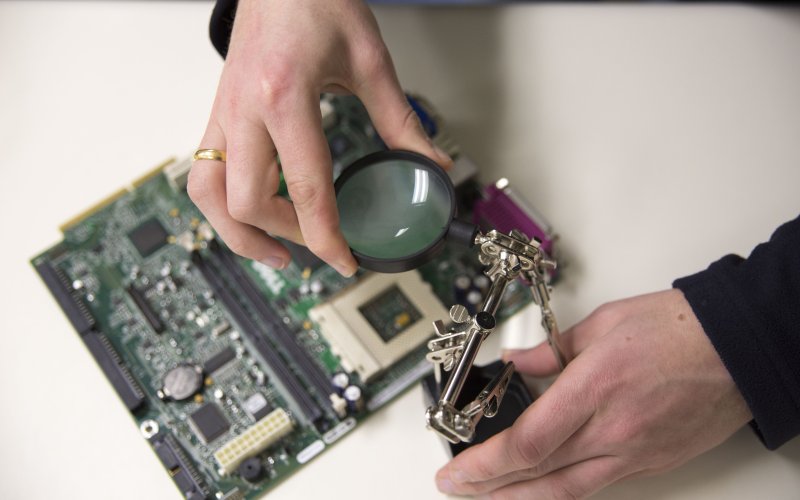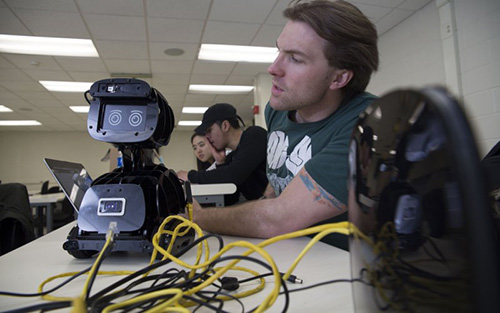This Degree Goes Electric

Innovative Program Forges New Pathways for Engineering Students
Bachelor’s of Science degree in Electrical and Computer Engineering prepares graduates for today’s job market
The college’s Bachelor of Science in Electrical and Computer Engineering has been approved by the New York State Education Department (NYSED), and UAlbany is accepting applications immediately. The program replaces the college’s bachelor’s degree in computer engineering program.
“Electrical engineers need a strong foundation in computational systems and hardware while computer engineers need a solid background in electronics and systems,” said CEAS Dean Kim L. Boyer. “Our new program provides this foundation in both computer and electrical engineering topics while giving students flexibility to customize their studies to best meet their interests and career goals.”

The new degree offerings, from the B.S. through the Ph.D., marks a milestone for the college’s Electrical and Computer Engineering Department. Students embarking on their studies will learn in an environment that fosters the development of practical skills as well as cutting-edge research.
The program also provides a greater level of flexibility. Using upper division electives, students can design their plan of study to emphasize computer engineering, electrical engineering or both, making BS ECE graduates well-prepared for today's job market or to advance to graduate studies. Graduates of the program can work in traditional electrical engineering fields such as integrated circuits, power systems, RF and microwave systems, wireless communications, automatic control, and video and image processing as well as traditional computer engineering fields such as software engineering, computer hardware, robotics, embedded systems, digital systems, and computer networking.
The breadth of graduates of the Electrical and Computer Engineering program makes them uniquely prepared to adapt and meet the ever-changing needs of industry in a rapidly evolving technical landscape.
The program has a strong design focus, giving students the analytical and hands-on tools needed to design systems for real-world applications. By integrating fundamentals from engineering, mathematics, computation, and physics, undergraduates learn how to design, build, and embed sophisticated hardware and software systems. A complete list of course requirements and course descriptions can be found in the Undergraduate Bulletin.
Electrical and computer engineering’s numerous sub-disciplines include energy sources and systems, control systems, electronics (including micro- and nanoelectronics), signal processing and image analysis, pattern recognition, telecommunications, instrumentation (including medical instrumentation), computers, and more.
Industries in communications systems, high speed and embedded computing, computer hardware and software design all compete for computer engineering graduates. Electrical and computer engineers are also leaders in the area of robotics, including autonomous air, water, and ground vehicles.
Created in 2015, CEAS was designed to provide the Capital Region’s first public option for computer engineering, and to create opportunities for students, faculty, public engagement, and to drive regional economic development.
The new programs are also significant as UAlbany continues to move forward with plans to renovate the former Schuyler Building to serve as a new home for the College of Engineering and Applied Sciences.
UAlbany is seeking $60 million in capital funding to support the renovation of the North Lake Avenue facility. The renovation will also broaden UAlbany’s downtown footprint and make CEAS a hub for public partnerships and significant public engagement opportunities, including use of the facility’s 1,000-seat auditorium, “maker-tinker space” for unstructured learning, student entrepreneurs, and capstone design projects, and programs for local K-12 schools.


